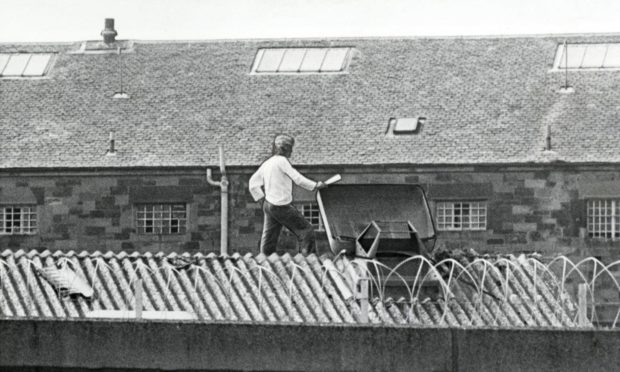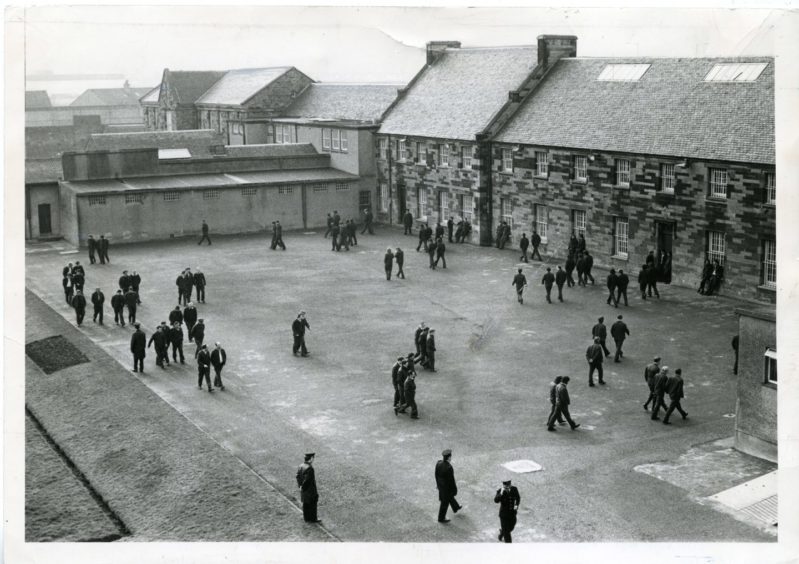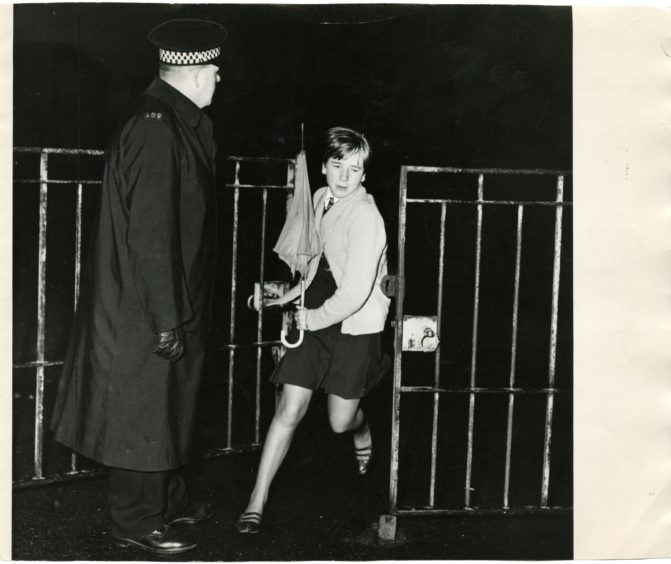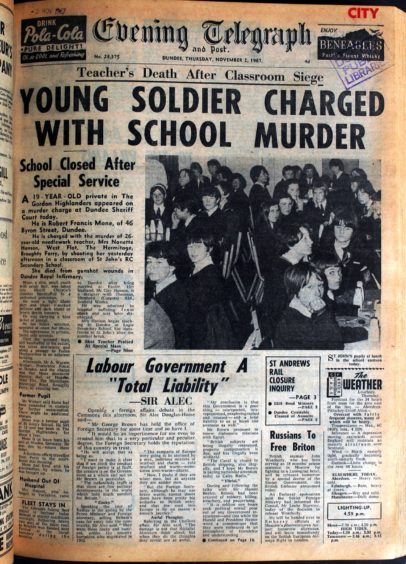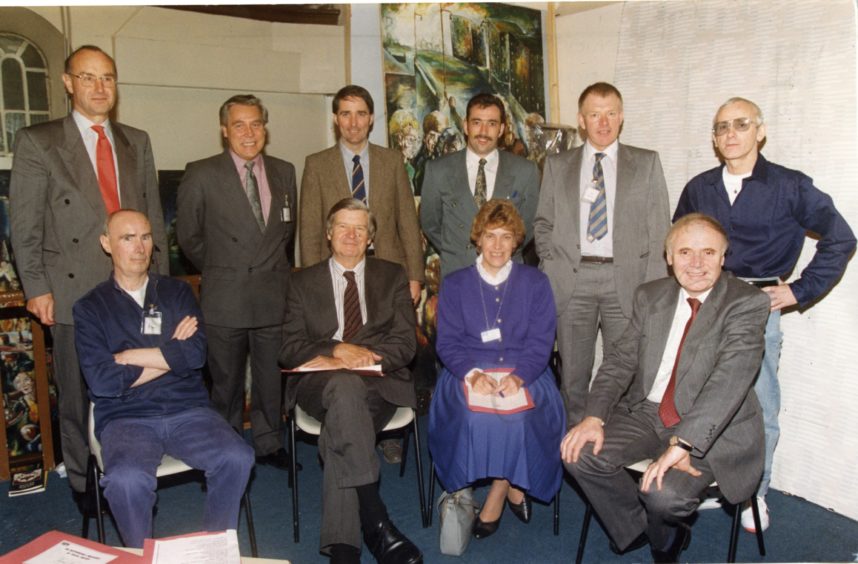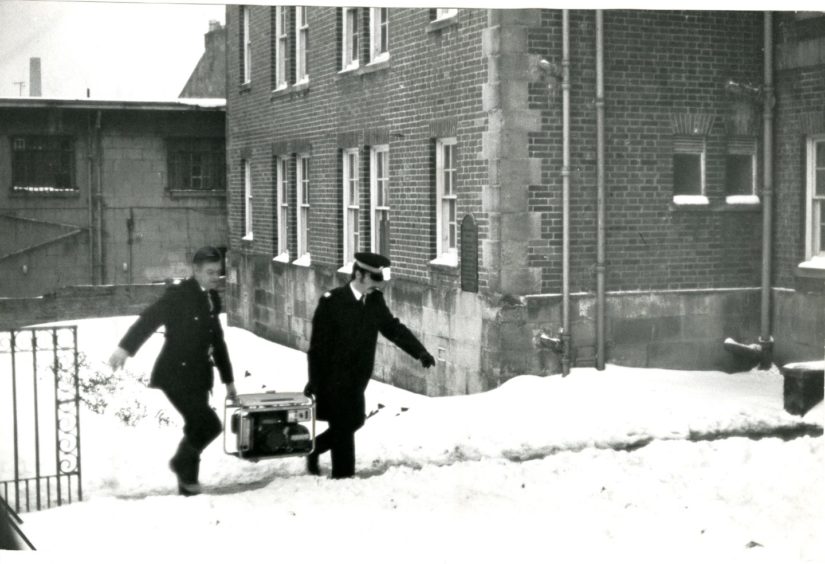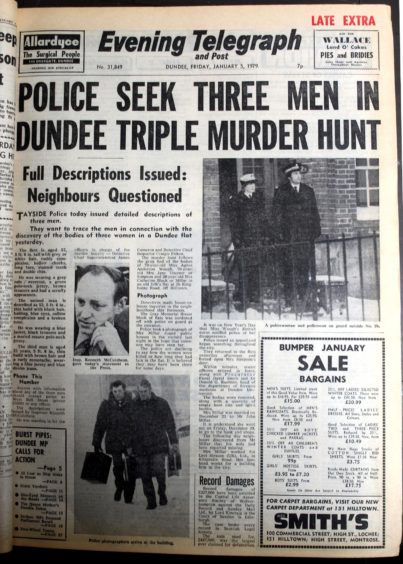Dundee murderer Robert Mone escaped on to the wash-house roof of Perth prison 40 years ago to air his dirty linen in public.
Mone gave guards the slip around 2pm while working in the prison laundry.
He climbed out to complain about his conditions including a lack of privacy.
He shouted to people in a nearby scrapyard 100 yards away that he was Robert Mone “top security prisoner”.
He said he might stay on the roof of the single-storey building for two days “or maybe three”.
Mone complained about being locked up in his cell
Mone broke a skylight, damaged ventilators and ripped sheets of asbestos from the roof which he threw into the prison yard on May 11 1981.
Following Mone’s run to the rooftop, all the other 550 prisoners at Perth were locked up in their cells and visiting was cancelled.
The prisoners shouted encouragement to their fellow inmate during the protest.
Mone claimed that on Saturdays and Sundays he was locked up for 23 hours out of 24 and for the rest of the week for 16 hours, and had to work the other eight.
“The light is on in my cell for 24 hours a day,” he shouted.
“I get no recreation at all and no privacy.”
Mone said he was constantly accompanied by two prison officers and even when he had visitors he saw them in a wire cage.
“They treat us like animals and we are going to act like animals,” he said.
He shouted that he had got through an open door when his two guards were not watching and had climbed on to the roof.
Mone said other inmates were unhappy about the conditions in Perth Prison where, amongst other complaints, the food was “terrible”.
He described the prison as a “powder keg”.
Mone was eventually talked down from his perch by a prison officer after eight hours.
He suffered cuts to his hands and legs as a result of his activities on the roof.
The damage to the laundry roof was assessed in daylight and a working party under the supervision of two officers went up on the roof to clean up the mess.
St John’s High incident left a dark cloud over Dundee
Mone was a 19-year-old soldier when he walked into a Dundee classroom armed with a shotgun and enough ammunition to kill every pupil in his sight.
Mone’s heinous acts at St John’s High School on November 1 1967 left pregnant teacher Nanette Hanson dead and sent shockwaves across the country.
He raped one child and molested another during the siege.
After being detained for his crimes, Mone broke out of the State Hospital at Carstairs with his lover Thomas McCulloch in a murderous rampage on November 30 1976 which left nurse Neil McLellan, 46, patient Iain Simpson, 40, and village bobby George Taylor, 27, dead, using knives and an axe.
Perth and East Perthshire Conservative MP Bill Walker said he was concerned that someone “with the violent history of Mone” could get on to the roof.
“This man Mone is one of Scotland’s most notorious and dangerous prisoners,” he said.
“One must be deeply concerned about the safety of the prison officers who have to deal with this vicious individual.”
Mr Walker asked the Secretary of State for Scotland Malcolm Rifkind if he would set up an inquiry into the incident.
“He caused damage to the roof but did not threaten or offer violence to staff,” said Mr Rifkind.
“At no time during the incident was there any risk of the prisoner making an escape from the prison.
“The governor is at present conducting an inquiry into the incident and his findings will be reported to my right honourable friend.”
Mone made the headlines again after 1987 prison riot
A series of riots took place in many Scottish prisons in the 1980s.
Robert Raiker of Edinburgh, who was serving a life sentence, was jailed for a further 12 years after he and other inmates took a warder hostage at Perth in October 1987.
Mone began a civil action against Mr Rifkind for compensation after alleging that his cell was looted during the riot after he was moved to a secure area of the jail.
The £120 civil action claiming negligence for the loss of belongings including a radio and spectacles was dismissed at Perth Sheriff Court in April 1989.
Mone was not given legal aid and had to finance his costs for the civil action against Mr Rifkind from the £5 a week he earned in prison.
Then John Daly of Glasgow staged a rooftop protest at the prison on Hogmanay 1996, when he braved sub-zero temperatures and an 80-foot drop to protest his innocence.
The following day, he was captured by 15 prison officers wearing riot gear.
Perth Prison also witnessed an assault on two prison officers in May 2009 when they were attacked by prisoners wielding metal chair legs.
The two prisoners, William Gallacher and Ronnie Smith, had barricaded themselves in a cell.
They were each jailed for eight months for the assault.
Mone’s father made good on his promise to go one better than his son
Mone’s father Sonny was proud of his offspring’s status as the ‘Carstairs Killer’ and boasted to his drinking pals he would go one better.
He made good on his promise when he murdered three women after a drinking session – one of them his father’s half-sister, known to him as “Auntie” Aggie – in what were otherwise-motiveless killings.
A murder hunt was triggered in January 1979 following the macabre twilight discovery at a flat in Kinghorne Road which came as a direct result of a missing-person search for 78-year-old Agnes Robertson Waugh.
In a ground-floor flat in the Hilltown, police found the body of Miss Waugh, and with her lay the bound, strangled and butchered corpses of Jane Simpson, 70, and Catherine Millar, 29.
Mone might have escaped justice but for a treasured gift from his idol son after his transfer from Carstairs to Perth Prison.
Mone Jr presented his father with his ring, saying he would not be allowed to wear it in prison.
It was the same ring that Mone wore on the day of the triple murder and which marked one of the women on the face.
That blow, and the fact that it matched with the ring, was a crucial piece of evidence in a case not strong on matters of fact.
Sonny Mone longed to be with his son in Perth prison
He gave a statement to police where he told Detective Inspector William Hart how he wanted to be in jail with his son Robert.
“I visit him but there’s a glass partition beside us and two screws there,” he said.
“I can’t touch him.
“All I live for is to be in there beside him.
“If I was in there, I would see he gets everything – pills, booze, anything, the lot.”
Mone, whose address at the time was Glenprosen Terrace, denied the charges, and 98 witnesses were cited by the Crown.
The jury took 75 minutes to reach a verdict following the trial, and Mone was sentenced to life imprisonment by Lord Robertson at the High Court in Dundee in June 1979.
He made a recommendation that Mone should serve at least 15 years before he would be eligible for parole.
Mone responded: “Would you mind backdating it, eh?”
Sent to Craiginches Prison in Aberdeen following his sentence, he was never to be with his son on the inside.
The 56-year-old triple killer eventually met his violent end in January 1983 in the main workshop building at the prison during a tea break.
Anthony John Currie, 39, ran up to the workshop carrying two knives and stabbed him on the neck and inflicted various other wounds.
